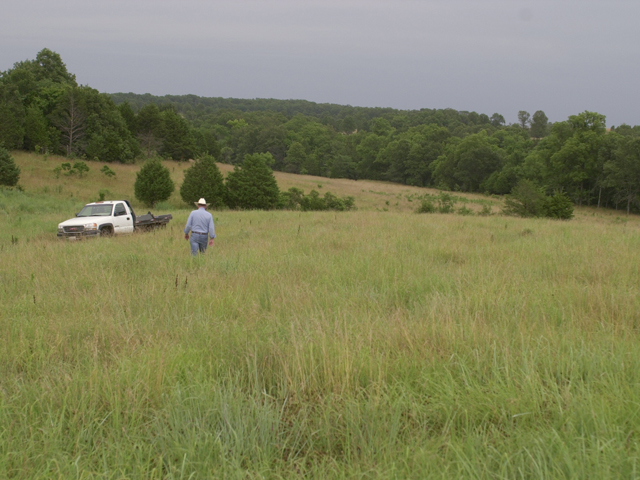Survey Shows Grazing Land Stewardship
Elanco Survey Shows Cattle Producers Value Environment, Beneficial Organisms
OMAHA (DTN) -- A vast majority of cattle producers have much interest in caring for the environment and pasture preservation practices, a recent survey sponsored by Elanco revealed. In addition, most producers understand the benefits of such organisms as dung beetles and earthworms in grassland ecology.
The findings showed 90% of cattle producers protect natural resources, including water, and 89% always follow pesticide labels as standard practice. Over half (56%) of those responding said sustainability means ensuring the longevity of their operation from year to year.
SUSTAINABILITY MATTERS
Sara Place, chief sustainability officer for Elanco, said sustainability means different things to producers. While 56% said ensuring longevity is what this term meant to them, 37% said it was about the economics of their operations and 29% said they thought about conserving natural resources.
"While it is certainly not surprising that cattle producers employ a variety of sustainability practices on their operations, we were interested to see the level of appreciation producers have for these insects that help them maintain viable pastures for their herds and the future," Place said.
The online poll of 433 members of the National Cattlemen's Beef Association (NCBA) members was completed in February 2021, according Mark Hilton, Elanco senior tech consultant for cattle. The objective of the survey was to obtain producers' views on the environment and understand if producers found benefits in dung beetles and earthworms in pasture management, he said.
The survey asked a question about practices producers are utilizing to preserve pasture and rangeland.
Eight-four percent said they rotational graze, while 81% said they maintained optimal stocking density on their grazing lands. Seventy-nine percent used supplemental winter grazing, 62% fertilized pastures based on soil test results and 59% ensured grass height was at least three inches (not to overgraze).
Other responses included 49% were building populations of native grass species and 48% used fences to keep animals out of water sources.
P[L1] D[0x0] M[300x250] OOP[F] ADUNIT[] T[]
PRODUCERS KNOW BEETLES, WORMS
Survey participants were also asked about their knowledge of beneficial organisms, such as dung beetles and earthworms.
Ninety-two percent said they found earthworms to be beneficial while 70% said the same about dung beetles. Almost 60% said they had observed these creatures on their land with 22% saying no and 21% saying they were not sure.
The top responses to the benefits of dung beetles in cattle production included 84% saying they sped up dung decomposition, 54% saying they improved nutrient availability and 48% saying they disrupt pest life cycles. For earthworms, 81% of respondents said they improve soil drainage, 80% listed improved nutrient availability and 40% included they speed up decomposition.
Hilton said research estimates dung beetles provide a $380 million economic benefit to livestock producers in the U.S. There are many different types of dung beetles and these insects help livestock producers remain profitable and maintain proper ecosystem, he said.
INSECTS AND DEWORMING
One particular response in the survey showed Elanco might have some work to do to inform producers about deworming products and how these products affect beneficial insects, according to Hilton.
The statement "I take them (beneficial organisms) into consideration when choosing deworming products for my herd" had a response of just 25% for the dung beetles and 13% for earthworms. This was lower than he expected, Hilton said.
"When I saw that one, I think that Elanco can do a better job with education," Hilton said in a virtual news conference.
Hilton said there are many benefits of using a deworming product in cattle production, but when these products are not used correctly, it can lead to resistance issues. Overuse of dewormer and incorrect dosage amounts can allow parasites to develop a genetic ability to survive when these products are used.
There are certain practices cattle producers should use to ensure deworming products remain viable, he said.
These practices include weighing each animal and applying the proper dosage, applying based on the label recommendation and avoiding use of anti-parasitic drugs for unapproved uses. In addition, culling cows with the highest fecal egg shedding and monitoring parasitic infestation by performing timely fecal egg counts are practices that should be followed with deworming products.
ANIMAL HEALTH CHANGING
When asked by DTN if the results of this survey could change how Elanco develops animal health products, both Hilton and Place said they thought this could have some effect on how the company develops new products in the future.
Hilton said Elanco has a new product coming out that decreases the amount of ammonia in urea and manure in feedlot cattle, he said. The company is very interested in the environment and sustainability of animal agriculture, he said.
Place said Elanco knows the issue of sustainability is a pressing one, from pasture management to greenhouse gas emissions. The company is always looking at ways to help their producers manage this area and succeed, she said.
"We know they are doing excellent things," Place said. "Part of it is elevating the great work they are doing and also always innovating and providing them with the solutions for their operations."
Russ Quinn can be reached at russ.quinn@dtn.com
Follow him on Twitter @RussQuinnDTN
(c) Copyright 2021 DTN, LLC. All rights reserved.






